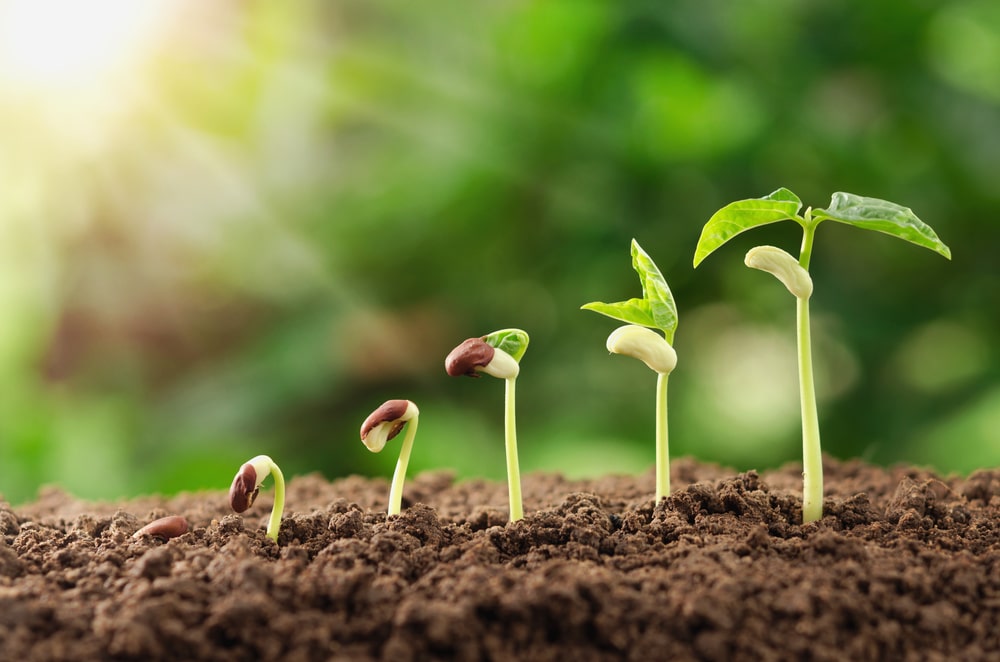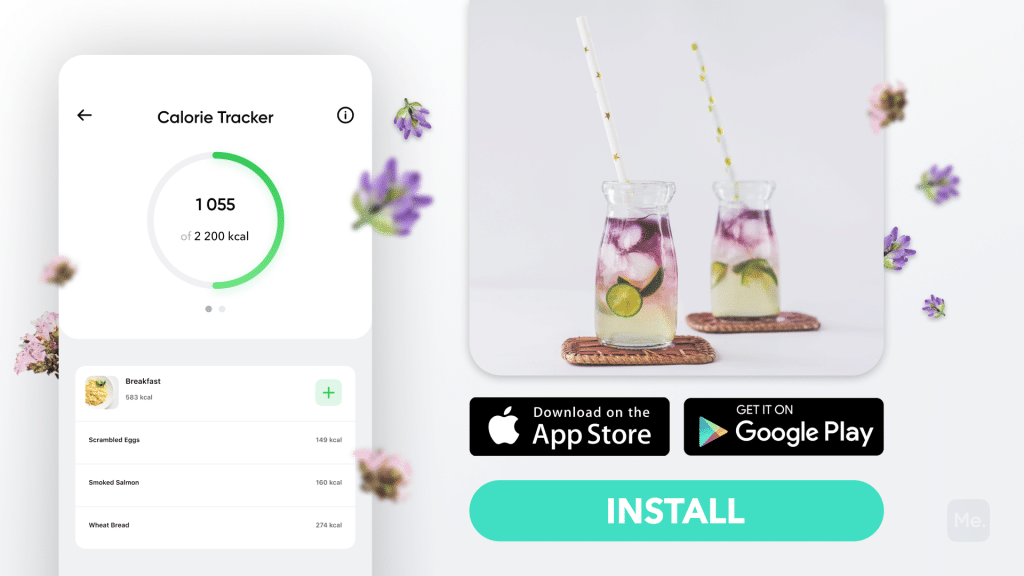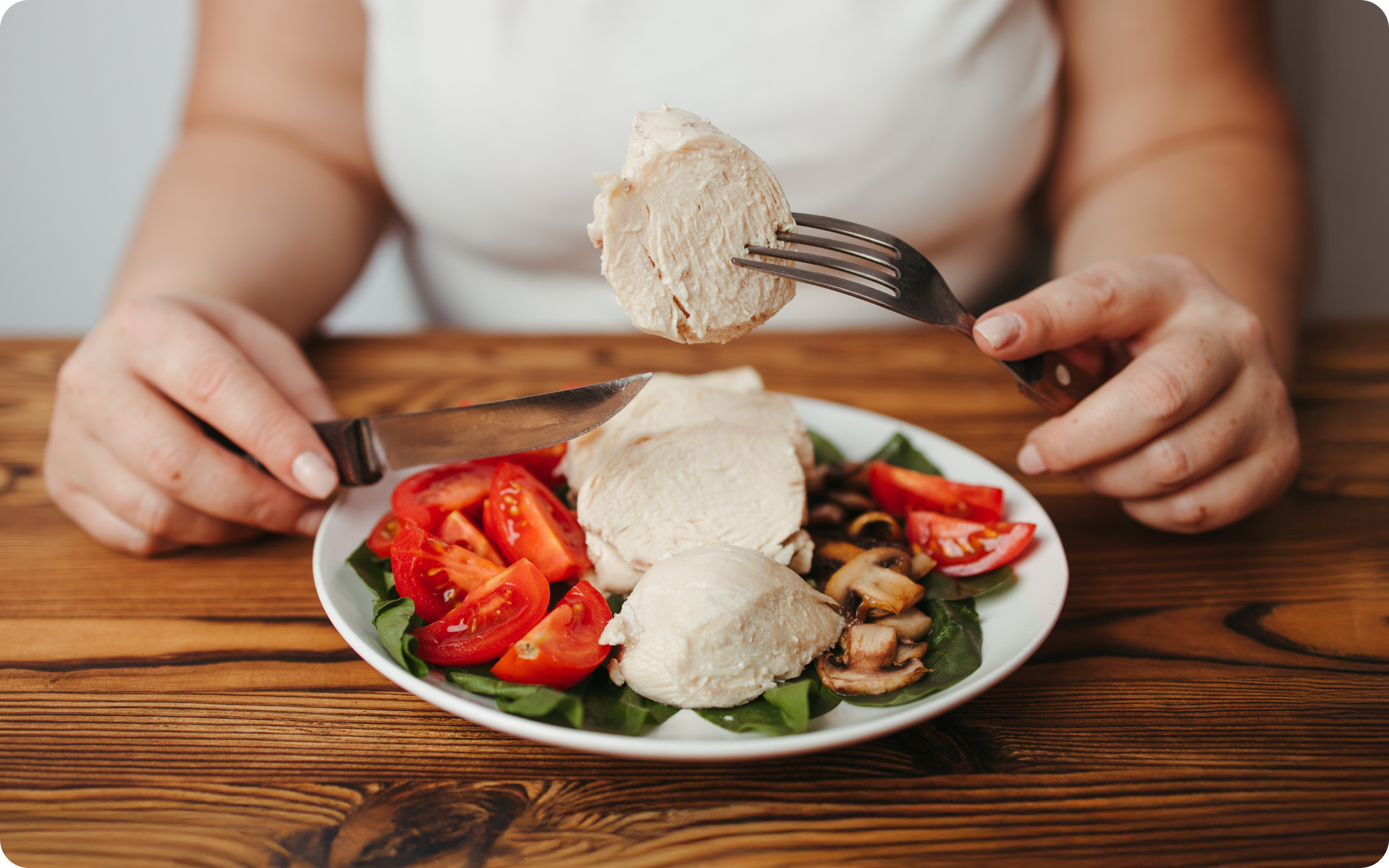Hormonal imbalances are a common issue for both men and women. Symptoms can range from mild to severe and include mood swings, weight gain, fatigue, and infertility. While there are many conventional treatments available, some people are turning to seed cycling as a natural way to restore balance. Like most alternative medicine practices, there is no one-size-fits-all answer when it comes to seed cycling. Some people find relief from symptoms, while others do not experience any benefits. If you are considering trying seed cycling, it is important to do your research and talk to a healthcare professional before getting started.
Get your personalized
meal plan!
What Is Seed Cycling?
Seed cycling is a natural approach to hormone balancing that involves eating specific seeds during certain times of the menstrual cycle. The theory behind seed cycling is that different types of seeds contain nutrients that might help to regulate hormones. There is little scientific evidence to support this theory and no studies on the practice of seed cycling itself, although it’s a pretty low-risk intervention as long as you don’t have any allergies to the seeds.
The four main seeds that are used in seed cycling are flax, pumpkin, sesame, and sunflower. The recommended regimen for seed cycling has two phases:
Phase 1
This begins on the first day of your period and lasts for 14 days. During phase 1, you eat one tablespoon each of flax seeds and pumpkin seeds every day. This phase is also called the “follicular phase.”
During the follicular phase, several changes are taking place in a woman’s body. The estrogen level is starting to increase and the ovaries are preparing to release an egg (8). The flax and pumpkin seeds in phase 1 of seed cycling are said to help to support these changes.
Phase 2
This begins on the 15th day of your cycle and lasts for approximately 14 days. During phase 2, you eat one tablespoon each of sesame seeds and sunflower seeds every day. This phase is also called the “luteal phase.”
The luteal phase is when the estrogen level starts to decline and the progesterone level starts to increase (8). The sesame and sunflower seeds in phase 2 of seed cycling are said to help to support these changes.
How To Seed Cycle If You Have Irregular Periods?
If you have irregular periods, you may find it difficult to follow the recommended seed cycling regimen. Tracking your menstrual cycle, basal body temperature, and symptoms with an app may help you better approximate when you ovulate, marking the shift from follicular phase to luteal phase. You can also take over the counter tests to help pinpoint ovulation.
How Does Seed Cycling Support Hormone Balance?
There is no scientific evidence to support the theory that seed cycling can help to regulate hormones. However, there are some nutrients in seeds that may be helpful for endocrine function and hormone balance.
Follicular Phase
The follicular phase is the first phase of your menstrual cycle. It begins on the first day of your period and lasts for 14 days. The follicular phase is when estrogen levels start to increase (21).
Flax seeds are a good source of omega-3 fatty acids, which are believed to help support the production of estrogen and other hormones (26). Pumpkin seeds are a good source of zinc, which is also believed to support female reproductive health (23).
Luteal Phase
The luteal phase is the second phase of your menstrual cycle. It begins on approximately the 15th day of your cycle and lasts for around 14 days. The luteal phase is when estrogen levels start to decline and progesterone levels start to increase (21).
Sesame seeds are a good source of magnesium, which is believed to help support progesterone and other hormone levels (19). Sunflower seeds are a good source of vitamin E, which is also believed to support female reproductive health (24).
The Nutritional Components In Seeds
It’s not a coincidence that these four seeds are recommended for seed cycling- each one of them contains a unique combination of nutrients that are thought to be beneficial for hormone balance.
Lignans
Flax seeds are a good source of lignans, which are a type of phytonutrient that can bind to estrogen receptors in the body. This may exert weak estrogen-like activity in the bodys (11).
Furthermore, one small study found that supplementation with flaxseeds may help lengthen the luteal phase, which is the second phase of the menstrual cycle (6). The luteal phase is responsible for secreting progesterone, so having a longer luteal phase may help to support a healthy pregnancy.
Read More: PCOS Diet To Manage Symptoms And Promote Weight Loss
Omega-3 Fatty Acids
Pumpkin seeds are a good source of omega-3 fatty acids, which are beneficial for overall health. Omega-3 fatty acids may help to improve blood flow to the uterus, which may help to reduce menstrual cramps (7).
Additionally, omega-3 fatty acids can help to reduce inflammation in the body. This could be important, as inflammation has been linked with conditions like PCOS and endometriosis (16).
Finally, omega-3s are thought to increase progesterone secretion, which is important for a healthy luteal phase.
Vitamin E
Flax, pumpkin, and sunflower seeds are all good sources of vitamin E. Vitamin E is a powerful antioxidant that can help to protect cells from damage. It is also important for the health of the reproductive system (24).
Specifically, vitamin E might help to regulate the menstrual cycle and improve reproductive health (24).
Magnesium
Sesame seeds are a good source of magnesium, which is a mineral that is important for many bodily functions. Magnesium may help to reduce anxiety, regulate blood sugar levels, and support a healthy pregnancy (14). It is also thought that getting enough magnesium may help to reduce menstrual cramp severity.
Zinc
Pumpkin and sesame seeds are good sources of zinc, which is important for overall health. Zinc is necessary for the production of testosterone and other hormones in the body (27).
Zinc is also essential for the formation of the corpus luteum in the uterus. The corpus luteum is responsible for secreting progesterone during the luteal phase and stimulating the implantation of a fertilized egg (20).
Selenium
Sunflower seeds are a good source of selenium, which is another important mineral for hormone balance. Selenium may be important during the luteal phase (4).
Additionally, selenium is necessary for the production of thyroid hormones (18). The thyroid gland is responsible for regulating metabolism, so having healthy thyroid function is important for maintaining a healthy weight, which can affect fertility and reproductive health.
Can Seed Cycling Help To Address Hormone-Related Conditions?
There is anecdotal evidence that seed cycling may be helpful for addressing hormone-related conditions. However, more research is needed to confirm these reports.
PMS
Premenstrual syndrome (PMS) is a condition that affects many women before their period. Symptoms of PMS can include mood swings, bloating, pain, and fatigue.
Flax seeds are a good source of omega-3 fatty acids, which have been shown to be helpful for addressing symptoms of PMS (10). Pumpkin seeds are a good source of zinc, which has also been shown to be helpful for addressing symptoms of PMS (13).
Endometriosis
Endometriosis is a condition where tissue that normally lines the inside of the uterus starts to grow outside of the uterus. This can cause pain and infertility (9).
Sunflower seeds are a good source of vitamin E, which has been shown to be inversely associated with endometriosis risk (1).
What Are The Benefits Of Seed Cycling?
There are many purported benefits of seed cycling. Some people report feeling more energetic, losing weight, and having better moods when they follow a seed cycling regimen.
Others find that their menstrual cramps are less severe, their skin is clearer, and they have more regular periods. While there is no scientific evidence to support these claims, some people do experience benefits when they follow a seed cycling routine.
The nutrient-dense seeds used in seed cycling may provide other health benefits:
Improved Heart Health
Seeds are a good source of healthy fats, which are important for heart health. The omega-3 fatty acids in seeds can help to lower cholesterol levels and reduce the risk of heart disease (15).
Reduced Inflammation
The antioxidants in seeds can help to reduce inflammation throughout the body. This is important, as inflammation has been linked to many chronic diseases, such as heart disease, arthritis, and cancer (17).
Protection From Disease
The nutrients in seeds can also help to protect the body from disease. The antioxidants in seeds can help to protect cells from damage. It is also important for the health of the reproductive system (2).
Specifically, vitamin E might help to protect the cells of the ovaries from damage (24).
Improved Gut Health
The fiber in seeds can help to improve gut health. This is important, as gut health has been linked to many aspects of health, including weight loss, mental health, and inflammation (5).
Better Weight Management
Seeds are rich in fiber, protein, and healthy fats. This combination can help to promote a healthy weight. Additionally, the nutrients in seeds can help to regulate blood sugar levels, which can also help those with insulin resistance (25).
If you’ve mustered up the courage to crush your weight loss goal, let Betterme take the sting out of this demanding process. Our app will help you restructure your habits, remold your life and crank up your fitness results!
How Can I Add Seed Cycling To My Diet?
If you would like to add seed cycling to your diet, there are many ways that you can do so. You can add seeds to your breakfast cereal, yogurt, or smoothie. You can also sprinkle them on top of your salad or put them in a trail mix. Here are a few more ideas:
- Add ground flax or chia seeds to smoothies or yogurt.
- Sprinkle sunflower seeds on top of a salad.
- Roast pumpkin seeds and use them as a topping for oatmeal or yogurt.
- Add sesame seeds to a stir-fry.
- Make pesto with basil and pine nuts, and add ground flax or chia seeds to the mixture.
- Make homemade seed butter
- Make homemade granola with a variety of different seeds.
How Long Does It Take To See Results From Seed Cycling?
It can take some time to see results from seed cycling. It may take a few months for the changes in your cycle to become noticeable. You may never see any noticeable benefit. Even if seed cycling doesn’t produce any noticeable changes in your menstrual cycle, seeds are a good source of many important nutrients and a healthy addition to your diet, as long as you don’t have an allergy to them.
Tips For Successful Seed Cycling
Here are a few tips for having success with seed cycling:
Grind Your Seeds
Seeds are highly fibrous and difficult to digest when they are eaten in their whole form. It is helpful to grind them up before you eat them. This will help your body to absorb the nutrients in the seeds more easily.
This especially applies to flaxseeds because your body can’t digest them without grinding them up.
Read More: Kosher Diet Menu: List Of Allowed And Restricted Foods And Meal Ideas
Eat Raw Seeds
Unroasted, unsalted seeds are the best choice when you are doing seed cycling. They are less processed and have a higher nutrient content.
Store Seeds Properly To Preserve Nutrients
The polyunsaturated fats in seeds go rancid quickly when they are exposed to light and heat. To preserve the nutrients in seeds, it is important to store them in a cool, dark, dry place.
Track Your Cycle
It can be helpful to track your cycle so that you can see any changes that are taking place. This can help you to determine whether or not seed cycling is working for you. There are many different apps and websites that can help you to do this.
Consider Other Causes Of Hormonal Imbalances
There are many factors that play into hormonal balance. Seed cycling is just one possible way to address hormonal imbalances. If you are struggling with hormonal issues, it is important to consult with a healthcare professional to determine the root cause of the problem.
Some of the possible causes of hormonal imbalance include (12):
- Stress – When you are stressed, your body releases cortisol, which can interfere with the production of other hormones.
- Poor Diet – A diet that is high in sugar and processed foods can throw off the balance of hormones in the body.
- Endocrine Disruptors – Hormone-disrupting chemicals found in everyday products might interfere with the normal function of the endocrine system.
- Exercise – Exercise can help to regulate hormones, but too much or too little can be problematic.
- Environmental Toxins – Exposure to toxins like lead and mercury can disrupt hormone production.
- Age – As we age, our hormone levels change and can become imbalanced.
- Genetics – Some people are predisposed to hormonal imbalances due to their genetics.
Hormonal imbalance can be a frustrating and debilitating condition. If you are struggling with symptoms like irregular periods, acne, fatigue, or weight gain, seed cycling may be a good option for you.
Reasons why BetterMe is a safe bet: a wide range of calorie-blasting workouts, finger-licking recipes, 24/7 support, challenges that’ll keep you on your best game, and that just scratches the surface! Start using our app and watch the magic happen.
However, it is important to remember that seed cycling is just one potential solution to hormonal imbalance. There are many other factors that can contribute to this condition, so it is important to consult with a healthcare professional to determine the root cause of your problems.
Other solutions that may help include:
- Stress management techniques like yoga or meditation
- A diet that is high in healthy fats and vegetables and low in ultra processed foods
- Reduced exposure to environmental toxins
- Hormone replacement therapy
- Regular exercise that is moderated to meet your individual needs
The Bottom Line
Seed cycling has become a popular trend in recent years as more and more people are looking for ways to balance their hormones naturally.
While there is no scientific evidence to support all of the benefits that are claimed, there is some evidence that the nutrients in seeds may offer some health benefits, as long as you don’t have an allergy to them.
The four seeds recommended for seed cycling – flax, pumpkin, sunflower, and sesame – all contain unique combinations of nutrients that might be beneficial for hormone balance.
DISCLAIMER:
This article is intended for general informational purposes only and does not serve to address individual circumstances. It is not a substitute for professional advice or help and should not be relied on for making any kind of decision-making. Any action taken as a direct or indirect result of the information in this article is entirely at your own risk and is your sole responsibility.
BetterMe, its content staff, and its medical advisors accept no responsibility for inaccuracies, errors, misstatements, inconsistencies, or omissions and specifically disclaim any liability, loss or risk, personal, professional or otherwise, which may be incurred as a consequence, directly or indirectly, of the use and/or application of any content.
You should always seek the advice of your physician or other qualified health provider with any questions you may have regarding a medical condition or your specific situation. Never disregard professional medical advice or delay seeking it because of BetterMe content. If you suspect or think you may have a medical emergency, call your doctor.
SOURCES:
- A prospective cohort study of Vitamins B, C, E, and multivitamin intake and endometriosis (2013, ncbi.nlm.nih.gov)
- Are antioxidants helpful for disease prevention? (2010, ncbi.nlm.nih.gov)
- Dairy-Food, Calcium, Magnesium, and Vitamin D Intake and Endometriosis: A Prospective Cohort Study (2013, ncbi.nlm.nih.gov)
- Dietary factors and luteal phase deficiency in healthy eumenorrheic women (2015, ncbi.nlm.nih.gov)
- Dietary Fiber and the Human Gut Microbiota: Application of Evidence Mapping Methodology (2017, ncbi.nlm.nih.gov)
- Effect of flax seed ingestion on the menstrual cycle (1993, academic.oup.com)
- Effect of omega-3 fatty acids on intensity of primary dysmenorrhea (2012, pubmed.ncbi.nlm.nih.gov)
- Endocrine Regulation of Menstruation (2006, academic.oup.com)
- Endometriosis (2022, ncbi.nlm.nih.gov)
- Evaluation of the effect of omega-3 fatty acids in the treatment of premenstrual syndrome: “a pilot trial” (2012, pubmed.ncbi.nlm.nih.gov)
- Flaxseed Lignans as Important Dietary Polyphenols for Cancer Prevention and Treatment: Chemistry, Pharmacokinetics, and Molecular Targets (2019, ncbi.nlm.nih.gov)
- Hormone Imbalance – Lucas Research (2016, lucasresearch.org)
- Intake of Selected Minerals and Risk of Premenstrual Syndrome (2013, ncbi.nlm.nih.gov)
- Magnesium in Prevention and Therapy (2015, mdpi.com)
- Omega-3 Fatty Acids and Heart Health (2015, ahajournals.org)
- Omega-3 Fatty Acids and Inflammatory Processes (2010, ncbi.nlm.nih.gov)
- Role of Antioxidants and Natural Products in Inflammation (2016, hindawi.com)
- Selenium and the Thyroid: A Close-Knit Connection (2010, academic.oup.com)
- Sex steroid hormones modulate serum ionized magnesium and calcium levels throughout the menstrual cycle in women (1998, pubmed.ncbi.nlm.nih.gov)
- The importance of folate, zinc and antioxidants in the pathogenesis and prevention of subfertility (2007, academic.oup.com)
- The Normal Menstrual Cycle and the Control of Ovulation – Endotext – NCBI Bookshelf (2018, ncbi.nlm.nih.gov)
- The regulation of menstrual cycle and its relationship to the moon (1986, pubmed.ncbi.nlm.nih.gov)
- The Role of Zinc in Selected Female Reproductive System Disorders (2020, mdpi.com)
- Vitamin E as an Antioxidant in Female Reproductive Health (2018, mdpi.com)
- Weight-Loss and Maintenance Strategies – Weight Management – NCBI Bookshelf (2004, ncbi.nlm.nih.gov)
- Women and Omega-3 Fatty Acids : Obstetrical & Gynecological Survey (2019, ncbi.nlm.nih.gov)
- Zinc is an Essential Element for Male Fertility: A Review of Zn Roles in Men’s Health, Germination, Sperm Quality, and Fertilization (2018, ncbi.nlm.nih.gov)













